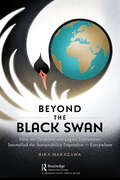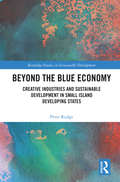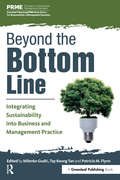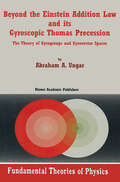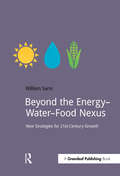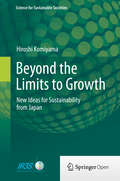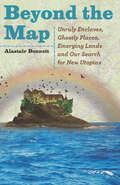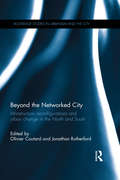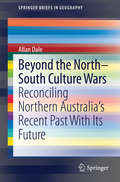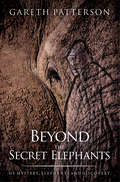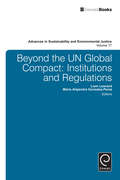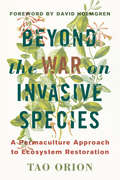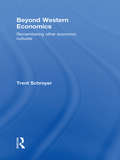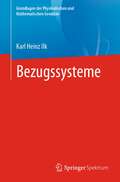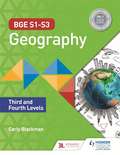- Table View
- List View
Beyond the Black Swan: How the Pandemic and Digital Innovations Intensified the Sustainability Imperative – Everywhere
by Rika NakazawaOf course, anyone would want to wake up from a really bad dream - especially one that seemed like it may never end, while successively stripping away joys and conveniences of our modern living. The COVID-19 pandemic bestowed on us a collective nightmare experience of varying intensity, akin to a "Black Swan" event, as author and mathematical philosopher Nassim Taleb might describe—given its universal rarity and devastating effects and seeming predictability in hindsight. However, we may remember this remarkable time in our history rather as a "White Swan" event—one that catalyzed a more common occurrence of evolving Environmental, Social, and Governance (ESG) principles, a mainstreaming of sustainability—fueled by the digital innovations that designed ways to survive and thrive into a new, and more holistic, world order. Now, as we emerge from the remnants of the pandemic’s aftermath, we find ourselves at the late dawn of a new geologic epoch—the "Anthropocene"—where the impact of humans on the planet’s geology and ecosystems looms so monumentally that the gravest threat to our existence stems from our own actions. Contained within these pages, you will discover insights from leaders across diverse domains—community, industry, public administration, and the investment community. Through their own experiences, we unfurl "White Swan sightings"— moments when sustainability flourished in response to reverberations of the COVID-19 virus. More poignantly, the journey ahead carries us beyond the realm of the Black Swan, while the acceleration of digital innovations equips us to herald a new era out of the Anthropocene and into a new one, with sustainability innovations as a critical placemat. The humanistic seismic shifts caused by the Pandemic will generate a future of holistic interoperability between digital and organic matters. We are on the brink of designing unprecedented harmony with each other and equilibrium of regenerative growth with the world around us. The urgency has never been greater, nor the possibilities so profound.
Beyond the Black Swan: How the Pandemic and Digital Innovations Intensified the Sustainability Imperative – Everywhere
by Rika NakazawaOf course, anyone would want to wake up from a really bad dream - especially one that seemed like it may never end, while successively stripping away joys and conveniences of our modern living. The COVID-19 pandemic bestowed on us a collective nightmare experience of varying intensity, akin to a "Black Swan" event, as author and mathematical philosopher Nassim Taleb might describe—given its universal rarity and devastating effects and seeming predictability in hindsight. However, we may remember this remarkable time in our history rather as a "White Swan" event—one that catalyzed a more common occurrence of evolving Environmental, Social, and Governance (ESG) principles, a mainstreaming of sustainability—fueled by the digital innovations that designed ways to survive and thrive into a new, and more holistic, world order. Now, as we emerge from the remnants of the pandemic’s aftermath, we find ourselves at the late dawn of a new geologic epoch—the "Anthropocene"—where the impact of humans on the planet’s geology and ecosystems looms so monumentally that the gravest threat to our existence stems from our own actions. Contained within these pages, you will discover insights from leaders across diverse domains—community, industry, public administration, and the investment community. Through their own experiences, we unfurl "White Swan sightings"— moments when sustainability flourished in response to reverberations of the COVID-19 virus. More poignantly, the journey ahead carries us beyond the realm of the Black Swan, while the acceleration of digital innovations equips us to herald a new era out of the Anthropocene and into a new one, with sustainability innovations as a critical placemat. The humanistic seismic shifts caused by the Pandemic will generate a future of holistic interoperability between digital and organic matters. We are on the brink of designing unprecedented harmony with each other and equilibrium of regenerative growth with the world around us. The urgency has never been greater, nor the possibilities so profound.
Beyond the Blue Economy: Creative Industries and Sustainable Development in Small Island Developing States (Routledge Studies in Sustainable Development)
by Peter RudgeThis book argues for a broader approach to sustainable growth in Small Island Developing States (SIDS). Small island states such as those in the Caribbean, Indian Ocean and South Pacific face significant and growing threats from climate change, increasing political and social volatility, and rapidly evolving global trends in technology and tourism. Based on ten years of research, this book looks beyond the Blue Economy of tourism and fisheries and provides a model of how creative industries, innovation networks, creative clusters and digital transformation can give SIDS the foundation for a strong sustainable future. The book provides not only insights into how these emerging digital-creative sectors can drive developing economies but also actionable tools for policy makers, entrepreneurs and academics to deliver increased performance on the United Nations Sustainable Development Goals and, ultimately, growth and sustainability. This book will be of great interest to scholars and practitioners of economic geography, sustainable development, development studies and the creative industries.
Beyond the Blue Economy: Creative Industries and Sustainable Development in Small Island Developing States (Routledge Studies in Sustainable Development)
by Peter RudgeThis book argues for a broader approach to sustainable growth in Small Island Developing States (SIDS). Small island states such as those in the Caribbean, Indian Ocean and South Pacific face significant and growing threats from climate change, increasing political and social volatility, and rapidly evolving global trends in technology and tourism. Based on ten years of research, this book looks beyond the Blue Economy of tourism and fisheries and provides a model of how creative industries, innovation networks, creative clusters and digital transformation can give SIDS the foundation for a strong sustainable future. The book provides not only insights into how these emerging digital-creative sectors can drive developing economies but also actionable tools for policy makers, entrepreneurs and academics to deliver increased performance on the United Nations Sustainable Development Goals and, ultimately, growth and sustainability. This book will be of great interest to scholars and practitioners of economic geography, sustainable development, development studies and the creative industries.
Beyond the Bottom Line: Integrating Sustainability into Business and Management Practice
by Milenko Gudić Tay Keong Tan Patricia M. FlynnBeyond the Bottom Line: Integrating the UN Global Compact into Management Practice is the first book to look at how the Ten UN Global Compact Principles and the sustainability agenda can be incorporated into business practice. The UN Global Compact is the largest corporate sustainability initiative and, with over 12,000 participating organizations, provides a major influence on global business sustainability practices. Its mission is to guide organizations in how to (1) do business responsibly by aligning their strategies and operations with Ten Principles on human rights, labour, environment and anti-corruption; and (2) take strategic actions to advance broader societal goals, such as the UN Sustainable Development Goals, with an emphasis on collaboration and innovation.This new book addresses head-on some of the most persistent managerial challenges faced by businesses and organizations today. To what extent are businesses able to practice responsible management with regard to the Ten Principles of the UN Global Compact? How can managers of organizations comprehensively and pragmatically address the risks and responsibilities concerning these complex and changing issues in their policies and practice? It also offers a platform for academics to confront some of the most intriguing intellectual challenges on this topic.
Beyond the Bottom Line: Integrating Sustainability into Business and Management Practice
by Milenko Gudic Tay Keong Tan Patricia M. FlynnBeyond the Bottom Line: Integrating the UN Global Compact into Management Practice is the first book to look at how the Ten UN Global Compact Principles and the sustainability agenda can be incorporated into business practice. The UN Global Compact is the largest corporate sustainability initiative and, with over 12,000 participating organizations, provides a major influence on global business sustainability practices. Its mission is to guide organizations in how to (1) do business responsibly by aligning their strategies and operations with Ten Principles on human rights, labour, environment and anti-corruption; and (2) take strategic actions to advance broader societal goals, such as the UN Sustainable Development Goals, with an emphasis on collaboration and innovation.This new book addresses head-on some of the most persistent managerial challenges faced by businesses and organizations today. To what extent are businesses able to practice responsible management with regard to the Ten Principles of the UN Global Compact? How can managers of organizations comprehensively and pragmatically address the risks and responsibilities concerning these complex and changing issues in their policies and practice? It also offers a platform for academics to confront some of the most intriguing intellectual challenges on this topic.
Beyond the Einstein Addition Law and its Gyroscopic Thomas Precession: The Theory of Gyrogroups and Gyrovector Spaces (Fundamental Theories of Physics #117)
by A.A. UngarEvidence that Einstein's addition is regulated by the Thomas precession has come to light, turning the notorious Thomas precession, previously considered the ugly duckling of special relativity theory, into the beautiful swan of gyrogroup and gyrovector space theory, where it has been extended by abstraction into an automorphism generator, called the Thomas gyration. The Thomas gyration, in turn, allows the introduction of vectors into hyperbolic geometry, where they are called gyrovectors, in such a way that Einstein's velocity additions turns out to be a gyrovector addition. Einstein's addition thus becomes a gyrocommutative, gyroassociative gyrogroup operation in the same way that ordinary vector addition is a commutative, associative group operation. Some gyrogroups of gyrovectors admit scalar multiplication, giving rise to gyrovector spaces in the same way that some groups of vectors that admit scalar multiplication give rise to vector spaces. Furthermore, gyrovector spaces form the setting for hyperbolic geometry in the same way that vector spaces form the setting for Euclidean geometry. In particular, the gyrovector space with gyrovector addition given by Einstein's (Möbius') addition forms the setting for the Beltrami (Poincaré) ball model of hyperbolic geometry. The gyrogroup-theoretic techniques developed in this book for use in relativity physics and in hyperbolic geometry allow one to solve old and new important problems in relativity physics. A case in point is Einstein's 1905 view of the Lorentz length contraction, which was contradicted in 1959 by Penrose, Terrell and others. The application of gyrogroup-theoretic techniques clearly tilt the balance in favor of Einstein.
Beyond the Einstein Addition Law and its Gyroscopic Thomas Precession: The Theory of Gyrogroups and Gyrovector Spaces (Fundamental Theories of Physics #117)
by Abraham A. Ungar"I cannot define coincidence [in mathematics]. But 1 shall argue that coincidence can always be elevated or organized into a superstructure which perfonns a unification along the coincidental elements. The existence of a coincidence is strong evidence for the existence of a covering theory. " -Philip 1. Davis [Dav81] Alluding to the Thomas gyration, this book presents the Theory of gy rogroups and gyrovector spaces, taking the reader to the immensity of hyper bolic geometry that lies beyond the Einstein special theory of relativity. Soon after its introduction by Einstein in 1905 [Ein05], special relativity theory (as named by Einstein ten years later) became overshadowed by the ap pearance of general relativity. Subsequently, the exposition of special relativity followed the lines laid down by Minkowski, in which the role of hyperbolic ge ometry is not emphasized. This can doubtlessly be explained by the strangeness and unfamiliarity of hyperbolic geometry [Bar98]. The aim of this book is to reverse the trend of neglecting the role of hy perbolic geometry in the special theory of relativity, initiated by Minkowski, by emphasizing the central role that hyperbolic geometry plays in the theory.
Beyond the Energy–Water–Food Nexus: New Strategies for 21st-Century Growth
by Will SarniProviding food, clean water and energy for a growing population is one of the greatest challenges facing public and private sector professionals. While there is widespread recognition of the complex feedback loops between energy, water and food, there has been less focus on viable solutions. This guide by Will Sarni – an internationally recognized thought leader on corporate water stewardship and water tech innovation – frames the key issues and challenges for business professionals, and then outlines emerging solutions which include both "soft path" and technology innovation approaches. The book includes case examples of multinational companies who are abandoning business as usual and moving beyond traditional thinking. It also highlights crucial new partnerships or "collective action initiatives" where NGOs, multinationals and the public sector come together to forge practical solutions to meet the needs of their stakeholders. Solutions to the energy–water–food nexus will need to be disruptive, not incremental, and will require technology innovation, new public–private partnerships, and changes in public policy. Beyond the Energy–Food–Water Nexus shows organizations how they can play their part in improving the quality of life for an urbanized global population while preserving the ecosystems that sustain us all.
Beyond the Energy–Water–Food Nexus: New Strategies for 21st-Century Growth (Doshorts Ser.)
by Will SarniProviding food, clean water and energy for a growing population is one of the greatest challenges facing public and private sector professionals. While there is widespread recognition of the complex feedback loops between energy, water and food, there has been less focus on viable solutions. This guide by Will Sarni – an internationally recognized thought leader on corporate water stewardship and water tech innovation – frames the key issues and challenges for business professionals, and then outlines emerging solutions which include both "soft path" and technology innovation approaches. The book includes case examples of multinational companies who are abandoning business as usual and moving beyond traditional thinking. It also highlights crucial new partnerships or "collective action initiatives" where NGOs, multinationals and the public sector come together to forge practical solutions to meet the needs of their stakeholders. Solutions to the energy–water–food nexus will need to be disruptive, not incremental, and will require technology innovation, new public–private partnerships, and changes in public policy. Beyond the Energy–Food–Water Nexus shows organizations how they can play their part in improving the quality of life for an urbanized global population while preserving the ecosystems that sustain us all.
Beyond the Limits to Growth: New Ideas for Sustainability from Japan (Science for Sustainable Societies)
by Hiroshi KomiyamaAt a time when contemporary challenges seem to many to be insurmountable, this book offers an optimistic view of the future and provides a road map for societies to get there. Drawing upon extensive research and many years as a thought leader in environmental and sustainability issues in Japan and internationally, Hiroshi Komiyama analyzes the most pressing challenges to the attainment of sustainability of economically advanced nations and argues forcefully for Japan to lead them out of the present dilemma through active promotion of creative consumer and societal demand. He shows how an active industry–government–academic partnership can provide the environment needed to promote such new creative demand and illustrates its potential through presentation of a Platinum Society Network that was launched on a regional basis in Japan in 2010 to facilitate the solution of common issues through the exchange of information and ideas. What is perhaps most surprising about the text is its unwavering optimism supported by hard evidence, history, and insightful observation. Problems arising from new paradigms of the 21st century (what the author refers to as “exploding knowledge, limited Earth resources, and aging societies“) thwart sustainable development in advanced and developing countries alike. All countries will struggle with issues that evolve from these paradigms including diminishing resources, expanding budget deficits, and growing global environmental problems. This window on potential practical pathways and solutions should be of interest to all those engaged in seeking ways to meet these contemporary challenges.
Beyond the Map: Unruly Enclaves, Ghostly Places, Emerging Lands and Our Search for New Utopias
by Alastair BonnettNew islands are under construction or emerging because of climate change. Eccentric enclaves and fantastic utopian experiments are multiplying. Once-secret fantasy gardens are cracking open their doors to outsiders. Our world is becoming stranger by the day—and Alastair Bonnett observes and captures every fascinating change. In Beyond the Map, Bonnett presents stories of the world’s most extraordinary spaces—many unmarked on any official map—all of which challenge our assumptions about what we know—or think we know—about our world. As cultural, religious and political boundaries ebb and flow with each passing day, traditional maps unravel and fragment. With the same adventurous spirit he effused in the acclaimed Unruly Places, Bonnett takes us to thirty-nine incredible spots around the globe to explore these changing boundaries and stimulate our geographical imagination. Some are tied to disruptive contemporary political turbulence, such as the rise of ISIL, Russia’s incursions into Ukraine and the Brexit vote in the United Kingdom. Others explore the secret places not shown on Google Earth or reflect fast-changing landscapes. Beyond the Map journeys out into a world of mysterious, daunting and magical spaces. It is a world of hidden cultures and ghostly memories, of uncountable new islands and curious stabs at paradise. From the phantom tunnels of the Tokyo subway to a stunning movie-set re-creation of 1950s-era Moscow; from the caliphate of the Islamic State to virtual cybertopias—this book serves as an imaginative guide to the farthest fringes of geography.
Beyond the Map: Unruly Enclaves, Ghostly Places, Emerging Lands and Our Search for New Utopias
by Alastair BonnettNew islands are under construction or emerging because of climate change. Eccentric enclaves and fantastic utopian experiments are multiplying. Once-secret fantasy gardens are cracking open their doors to outsiders. Our world is becoming stranger by the day—and Alastair Bonnett observes and captures every fascinating change. In Beyond the Map, Bonnett presents stories of the world’s most extraordinary spaces—many unmarked on any official map—all of which challenge our assumptions about what we know—or think we know—about our world. As cultural, religious and political boundaries ebb and flow with each passing day, traditional maps unravel and fragment. With the same adventurous spirit he effused in the acclaimed Unruly Places, Bonnett takes us to thirty-nine incredible spots around the globe to explore these changing boundaries and stimulate our geographical imagination. Some are tied to disruptive contemporary political turbulence, such as the rise of ISIL, Russia’s incursions into Ukraine and the Brexit vote in the United Kingdom. Others explore the secret places not shown on Google Earth or reflect fast-changing landscapes. Beyond the Map journeys out into a world of mysterious, daunting and magical spaces. It is a world of hidden cultures and ghostly memories, of uncountable new islands and curious stabs at paradise. From the phantom tunnels of the Tokyo subway to a stunning movie-set re-creation of 1950s-era Moscow; from the caliphate of the Islamic State to virtual cybertopias—this book serves as an imaginative guide to the farthest fringes of geography.
Beyond the Map: Unruly Enclaves, Ghostly Places, Emerging Lands and Our Search for New Utopias
by Alastair BonnettNew islands are under construction or emerging because of climate change. Eccentric enclaves and fantastic utopian experiments are multiplying. Once-secret fantasy gardens are cracking open their doors to outsiders. Our world is becoming stranger by the day—and Alastair Bonnett observes and captures every fascinating change. In Beyond the Map, Bonnett presents stories of the world’s most extraordinary spaces—many unmarked on any official map—all of which challenge our assumptions about what we know—or think we know—about our world. As cultural, religious and political boundaries ebb and flow with each passing day, traditional maps unravel and fragment. With the same adventurous spirit he effused in the acclaimed Unruly Places, Bonnett takes us to thirty-nine incredible spots around the globe to explore these changing boundaries and stimulate our geographical imagination. Some are tied to disruptive contemporary political turbulence, such as the rise of ISIL, Russia’s incursions into Ukraine and the Brexit vote in the United Kingdom. Others explore the secret places not shown on Google Earth or reflect fast-changing landscapes. Beyond the Map journeys out into a world of mysterious, daunting and magical spaces. It is a world of hidden cultures and ghostly memories, of uncountable new islands and curious stabs at paradise. From the phantom tunnels of the Tokyo subway to a stunning movie-set re-creation of 1950s-era Moscow; from the caliphate of the Islamic State to virtual cybertopias—this book serves as an imaginative guide to the farthest fringes of geography.
Beyond the Map: Unruly Enclaves, Ghostly Places, Emerging Lands and Our Search for New Utopias
by Alastair BonnettNew islands are under construction or emerging because of climate change. Eccentric enclaves and fantastic utopian experiments are multiplying. Once-secret fantasy gardens are cracking open their doors to outsiders. Our world is becoming stranger by the day—and Alastair Bonnett observes and captures every fascinating change. In Beyond the Map, Bonnett presents stories of the world’s most extraordinary spaces—many unmarked on any official map—all of which challenge our assumptions about what we know—or think we know—about our world. As cultural, religious and political boundaries ebb and flow with each passing day, traditional maps unravel and fragment. With the same adventurous spirit he effused in the acclaimed Unruly Places, Bonnett takes us to thirty-nine incredible spots around the globe to explore these changing boundaries and stimulate our geographical imagination. Some are tied to disruptive contemporary political turbulence, such as the rise of ISIL, Russia’s incursions into Ukraine and the Brexit vote in the United Kingdom. Others explore the secret places not shown on Google Earth or reflect fast-changing landscapes. Beyond the Map journeys out into a world of mysterious, daunting and magical spaces. It is a world of hidden cultures and ghostly memories, of uncountable new islands and curious stabs at paradise. From the phantom tunnels of the Tokyo subway to a stunning movie-set re-creation of 1950s-era Moscow; from the caliphate of the Islamic State to virtual cybertopias—this book serves as an imaginative guide to the farthest fringes of geography.
Beyond the Networked City: Infrastructure reconfigurations and urban change in the North and South (Routledge Studies in Urbanism and the City)
by Olivier Coutard Jonathan RutherfordCities around the world are undergoing profound changes. In this global era, we live in a world of rising knowledge economies, digital technologies, and awareness of environmental issues. The so-called "modern infrastructural ideal" of spatially and socially ubiquitous centrally-governed infrastructures providing exclusive, homogeneous services over extensive areas, has been the standard of reference for the provision of basic essential services, such as water and energy supply. This book argues that, after decades of undisputed domination, this ideal is being increasingly questioned and that the network ideology that supports it may be waning. In order to begin exploring the highly diverse, fluid and unstable landscapes emerging beyond the networked city, this book identifies dynamics through which a ‘break’ with previous configurations has been operated, and new brittle zones of socio-technical controversy through which urban infrastructure (and its wider meaning) are being negotiated and fought over. It uncovers, across a diverse set of urban contexts, new ways in which processes of urbanization and infrastructure production are being combined with crucial sociopolitical implications: through shifting political economies of infrastructure which rework resource distribution and value creation; through new infrastructural spaces and territorialities which rebundle socio-technical systems for particular interests and claims; and through changing offsets between individual and collective appropriation, experience and mobilization of infrastructure. With contributions from leading authorities in the field and drawing on theoretical advances and original empirical material, this book is a major contribution to an ongoing infrastructural turn in urban studies, and will be of interest to all those concerned by the diverse forms and contested outcomes of contemporary urban change across North and South.
Beyond the Networked City: Infrastructure reconfigurations and urban change in the North and South (Routledge Studies in Urbanism and the City)
by Olivier Coutard Jonathan RutherfordCities around the world are undergoing profound changes. In this global era, we live in a world of rising knowledge economies, digital technologies, and awareness of environmental issues. The so-called "modern infrastructural ideal" of spatially and socially ubiquitous centrally-governed infrastructures providing exclusive, homogeneous services over extensive areas, has been the standard of reference for the provision of basic essential services, such as water and energy supply. This book argues that, after decades of undisputed domination, this ideal is being increasingly questioned and that the network ideology that supports it may be waning. In order to begin exploring the highly diverse, fluid and unstable landscapes emerging beyond the networked city, this book identifies dynamics through which a ‘break’ with previous configurations has been operated, and new brittle zones of socio-technical controversy through which urban infrastructure (and its wider meaning) are being negotiated and fought over. It uncovers, across a diverse set of urban contexts, new ways in which processes of urbanization and infrastructure production are being combined with crucial sociopolitical implications: through shifting political economies of infrastructure which rework resource distribution and value creation; through new infrastructural spaces and territorialities which rebundle socio-technical systems for particular interests and claims; and through changing offsets between individual and collective appropriation, experience and mobilization of infrastructure. With contributions from leading authorities in the field and drawing on theoretical advances and original empirical material, this book is a major contribution to an ongoing infrastructural turn in urban studies, and will be of interest to all those concerned by the diverse forms and contested outcomes of contemporary urban change across North and South.
Beyond the North-South Culture Wars: Reconciling Northern Australia's Recent Past With Its Future (SpringerBriefs in Geography)
by Allan DaleIncreasingly, Australia’s agriculturalists are looking to the nation’s north to escape the decline in southern Australia’s water and soil resources. Booming mineral and gas development is also helping to drive the nation’s economic success. At the same time, the south’s conservation sector would like to see much of the north preserved as iconic wilderness. Both conservation and resource development interests alike are often at odds with the interests of the north’s traditional owners, many of whom remain trapped in welfare dependency and poverty. Indeed, to the ire of north Australians, the past five decades of north Australian history have indeed been characterized by these national-scale conflicts being played out in regional and local communities.This book explores these conflicts as well as the many emerging opportunities facing the development of the north, suggesting that a strong cultural divide between northern and southern Australia exists; one that needs to be reconciled if the nation as a whole is to benefit from northern development. The author first explores where these historical conflicts could take us without a clear forward agenda. A story-based personal narrative from his long and diverse experience in the north gives life to these themes. Finally, the book then draws on these stories to help shape a cohesive agenda for the north’s future.
Beyond the Secret Elephants: On mystery, elephants and discovery
by Gareth PattersonBeyond the Secret Elephants is Gareth Patterson’s long-awaited sequel to The Secret Elephants, published in 2009.Beyond the Secret Elephants is the continuing story of Gareth Patterson’s almost two decades of research into the secretive Knysna elephants. Significantly, however, it also reveals his startling discovery of a much more mysterious being than the elephants – a relict hominoid known to the indigenous forest people as the Otang.Gareth had long heard about the existence of the otang from the local people but he mentioned it only briefly in The Secret Elephants, focusing instead on his rediscovery of the Knysna elephants and their survival against the odds. He was reluctant to blur the story of the elephants with his findings about the otang.That is, until now.The possible existence of relict hominoids is today gaining momentum worldwide with ongoing research into Bigfoot in North America, the Yeti in the Himalayas and the Orang Pendek in Sumatra. Eminent conservationists and scientists – among them Dr Jane Goodall, Dr George Schaller and Professor Jeff Meldrum – have publicly stated that they are open-minded about the possible existence of these cryptid beings.In the course of his unannounced research into the otang Gareth heard many accounts – mostly spontaneous and unprompted – of otang sightings by others in the area over a number of years. These accounts, documented in the book, are astonishingly consistent both in the descriptions of the otang and in the shocked reactions of the individuals who saw them.Gareth Patterson’s work supports the increasing realisation that humankind still has much to learn about the natural world and the mysteries it holds. The possibility that we may be sharing our world with other as yet unidentified hominoids is today being viewed as something that should not be discounted. And as humankind, we need to reassess our role and our responsibility towards all forms of life that coexist with us on planet Earth.… following in the erudite footsteps of the late Lyall Watson … by exploring beyond the fringe of 'fringe science' … - Ian Redmond OBE
Beyond the UN Global Compact: Institutions and regulations (Advances in Sustainability and Environmental Justice #17)
by Liam Leonard Maria Alejandra Gonzalez-PerezThis book offers African, Asian, Latin American, European, and North American perspectives on institutions and regulations promoting sustainable economic growth in the post-2015 development agenda in areas such as environment, labour, risk management, corporate social responsibility, corporate governance, and innovation. The chapters address sustainability issues at the firm, national, regional and international levels from a multidisciplinary perspective. The chapters of this volume address the challenge of enhancing economic competitiveness of the supply side economies while pushing a sustainable development agenda. This work addresses the existing inequalities, environmental degradation, and economic/financial instability under current dynamics of international and domestic power relations in order to meet the set objectives for the post-2015 era. This volume advances the perspectives on the non-compulsory alternative to markets regulations, the United Nations Global Compact, explored in the previous volume 'The UN Global Compact: Fair Competition and Environmental and Labour Justice in International Markets' vol. 16.
Beyond the War on Invasive Species: A Permaculture Approach to Ecosystem Restoration
by Tao Orion David HolmgrenInvasive species are everywhere, from forests and prairies to mountaintops and river mouths. Their rampant nature and sheer numbers appear to overtake fragile native species and forever change the ecosystems that they depend on. Concerns that invasive species represent significant threats to global biodiversity and ecological integrity permeate conversations from schoolrooms to board rooms, and concerned citizens grapple with how to rapidly and efficiently manage their populations. These worries have culminated in an ongoing “war on invasive species,” where the arsenal is stocked with bulldozers, chainsaws, and herbicides put to the task of their immediate eradication. In Hawaii, mangrove trees (Avicennia spp.) are sprayed with glyphosate and left to decompose on the sandy shorelines where they grow, and in Washington, helicopters apply the herbicide Imazapyr to smooth cordgrass (Spartina alterniflora) growing in estuaries. The “war on invasive species” is in full swing, but given the scope of such potentially dangerous and ecologically degrading eradication practices, it is necessary to question the very nature of the battle. Beyond the War on Invasive Species offers a much-needed alternative perspective on invasive species and the best practices for their management based on a holistic, permaculture-inspired framework. Utilizing the latest research and thinking on the changing nature of ecological systems, Beyond the War on Invasive Species closely examines the factors that are largely missing from the common conceptions of invasive species, including how the colliding effects of climate change, habitat destruction, and changes in land use and management contribute to their proliferation. Beyond the War on Invasive Species demonstrates that there is more to the story of invasive species than is commonly conceived, and offers ways of understanding their presence and ecosystem effects in order to make more ecologically responsible choices in land restoration and biodiversity conservation that address the root of the invasion phenomenon. The choices we make on a daily basis—the ways we procure food, shelter, water, medicine, and transportation—are the major drivers of contemporary changes in ecosystem structure and function; therefore, deep and long-lasting ecological restoration outcomes will come not just from eliminating invasive species, but through conscientious redesign of these production systems.
Beyond Western Economics: Remembering Other Economic Cultures
by Trent SchroyerThis book combines intellectual history with contemporary events to offer a critique of mainstream economic thought and its neoliberal policy incarnation in global capitalism. The critique operates both theoretically, at the level of metaphysics and the philosophy of science, and concretely, in case studies of globalization and world events. Trent Schroyer provides a moral and cultural interpretation of modernity and scientism, highlighting their political and economic consequences – but the book’s main purpose is not to criticize. The author moves beyond this to offer alternative "economic cultures," again combining abstract theoretical analysis with concrete case studies of alternative economic formations from local self-sufficiency movements to cooperatives and other anti-capitalist institutional experiments. These case studies exhibit an impressive range of variation, from first world to third world, from reformist to utopian transformative. Finally, Schroyer links the project to the global justice movement that opposes corporate globalization and eventually links participatory economics and democratic politics to a new image of science as "participatory social learning."
Beyond Western Economics: Remembering Other Economic Cultures
by Trent SchroyerThis book combines intellectual history with contemporary events to offer a critique of mainstream economic thought and its neoliberal policy incarnation in global capitalism. The critique operates both theoretically, at the level of metaphysics and the philosophy of science, and concretely, in case studies of globalization and world events. Trent Schroyer provides a moral and cultural interpretation of modernity and scientism, highlighting their political and economic consequences – but the book’s main purpose is not to criticize. The author moves beyond this to offer alternative "economic cultures," again combining abstract theoretical analysis with concrete case studies of alternative economic formations from local self-sufficiency movements to cooperatives and other anti-capitalist institutional experiments. These case studies exhibit an impressive range of variation, from first world to third world, from reformist to utopian transformative. Finally, Schroyer links the project to the global justice movement that opposes corporate globalization and eventually links participatory economics and democratic politics to a new image of science as "participatory social learning."
Bezugssysteme (Grundlagen der Physikalischen und Mathematischen Geodäsie)
by Karl Heinz IlkDieses Lehrbuch aus der Reihe „Grundlagen der Physikalischen und Mathematischen Geodäsie“ zeigt, warum Bezugssysteme und Bezugsrahmen in der Erdmessung eine fundamentale Rolle spielen. Der Autor erläutert den Newtonschen Raum-Zeit-Begriff und gibt eine Einführung in das Einsteinsche Raum-Zeit-Konzept. Wichtige Beziehungen für die Translation der Erde im Sonnensystem werden präsentiert, und es wird ausführlich die Mechanik der Rotation der Erde im Falle drehmomentfreier Bewegungen sowie unter dem Einfluss eines luni-solaren Drehmomentes behandelt. Neben diesen grundlegenden Aspekten werden die Begriffe Ekliptik- und Äquatorsystem als raumfeste Bezugssysteme eingeführt und die Transformationen zwischen den verschiedenen Bezugssystemen bzw. zwischen den verschiedenen Bezugsrahmen behandelt. Eine Zusammenstellung verschiedener Zeitsysteme rundet das Werk ab.
BGE S1–S3 Geography: Third and Fourth Levels
by Carly BlackmanSyllabus: CfE (Curriculum for Excellence, from Education Scotland) and SQALevel: BGE S1-S3: Third and Fourth LevelSubject: GeographyTake your pupils on a journey where they will think, question and explore like geographers, developing their geographical skills, knowledge and understanding throughout S1-S3.Covering all CfE Third and Fourth Level Benchmarks for Social Studies: People, Place and Environment, this ready-made and fully differentiated BGE Geography course puts progression for every pupil at the heart of your curriculum.- Build understanding of geographical ideas, issues and processes: Clear explanations, diagrams and definitions of key words make the content accessible and engaging for all pupils- Interpret, analyse and evaluate geographical data: Pupils will practise and improve their geographical skills by completing a range of activities that involve maps, photos, graphs and case studies - with answers provided at the back of the book- Meet the needs of each pupil in your class: The content and activities are designed to ensure accessibility for those with low prior attainment, while extension tasks will stretch and challenge higher ability pupils- Effectively check and assess progress: All activities support formative assessment, helping you monitor progression against the Experiences & Outcomes and Benchmarks (with additional assessments and worksheets in the separate Planning & Assessment Pack)- Lay firm foundations for National qualifications: The skills, knowledge and understanding established through the course will set pupils up for success at National 5 and beyond- Deliver the 'responsibility for all' Es and Os: Plenty of activities that address literacy, numeracy and health and wellbeing skills are threaded through the book
